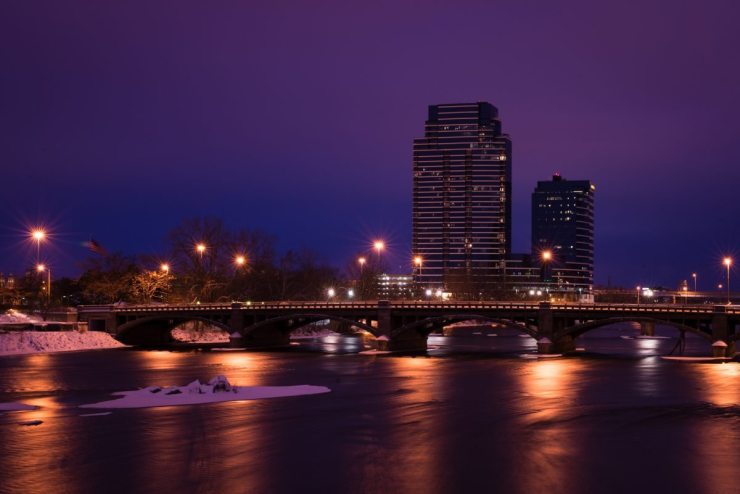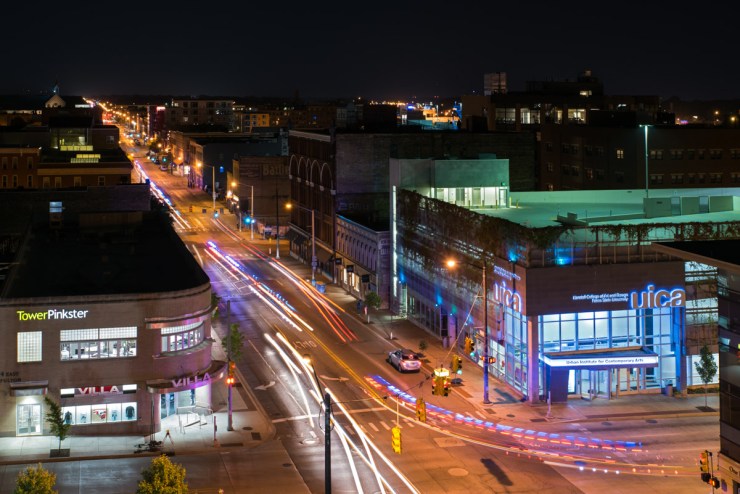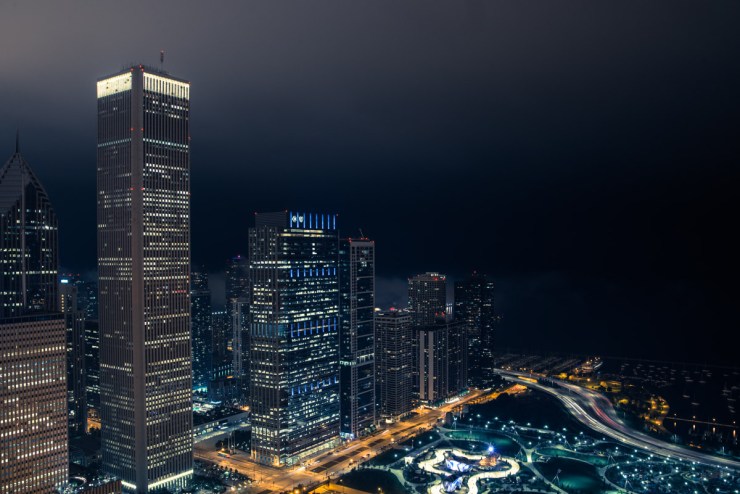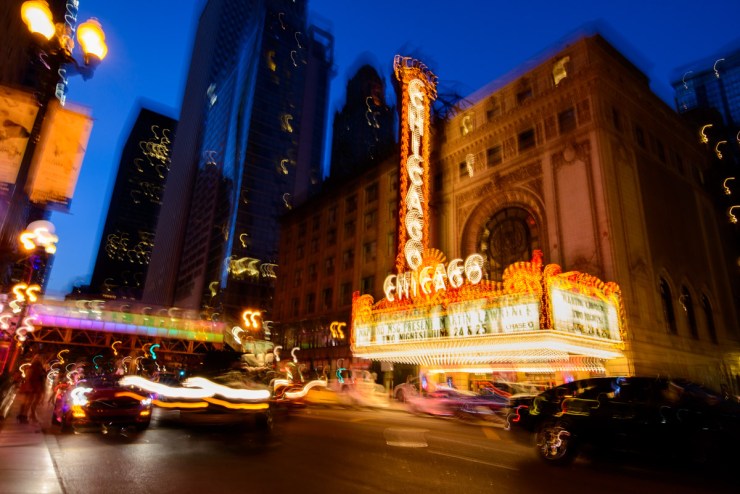We’ve all had those “ooh” moments. When we see a type of photograph that we’ve longed to create, but have often been afraid to do so.
Four years ago, that was me, specifically when trying my first-ever long exposure. With my new (at the time) Nikon D800 in hand, Levi Sim by my side and a really cheap, lightweight tripod that could barely hold the camera, I ventured into the frozen tundra that is known as Winter in Michigan.
I had always been in awe of seeing the water look like glass. The starbursts of the streetlights. The frozen-in-time movement. And once I learned the basics of creating a long exposure, I never stopped.

What you need
You really only need three pieces of equipment. One, your camera that supports manual mode, and ideally, a bulb shutter speed. Two, a lens that’s wide enough to capture what you desire. And three, a tripod that will hold your camera and lens.
Note that these are just the basics. If you want to take long exposures during the day, or for extended periods of time (over 30 seconds), you’re going to need a Neutral Density (ND) filter as well. And a lot of patience.
The one piece of gear I didn’t have for my first long exposure was a remote trigger. This helps to eliminate camera shake, and it lets you both start and stop your exposure. Something like the Vello FreeWave Plus Wireless Remote Shutter Release would be perfect.
Alternatively, you can use the exposure delay option on your camera, or if your camera has a smartphone app, you can use that (note that will greatly decrease your battery time).

Getting started
First things first — compose your image. Focus on your subject and lock the focus. To do this, half-press the shutter button, and once your focus has been made, switch your lens from Autofocus to Manual. This way, your camera doesn’t have to search for its focus point when there’s little (or no) contrast available to it during a long exposure.
From there, I recommend changing your camera to Manual mode. Close your aperture to its sweet spot — often between f/8 and f/11. Then lower the ISO to somewhere around 200 or 400. Slow down your shutter speed to 5 seconds. Then take a test shot.
What you should see is a shot that is at least starting to resemble what you envisioned. If your exposure is too bright, try lowering the ISO even more, or slightly increase your shutter speed.
If your exposure is too dark, slow down your shutter speed, and increase the ISO.
Continue to play around with your settings until you are happy with the image. Certainly don’t be afraid to take your time with this and get the right look and feel you want!

Taking it a step further
But what if you want a 1-minute exposure … or perhaps even longer? You don’t have to be limited by your camera’s abilities. This is when the remote trigger I mentioned earlier comes in handy.
By switching your shutter speed to “Bulb,” you control when the exposure starts and ends by clicking the shutter button on your remote.
Oftentimes though, without an ND filter, your exposure will just be too bright. Think of an ND filter like putting on a pair of sunglasses. It shades your eyes, just like it shades your camera’s lens. Putting on an ND filter allows you to slow down your shutter speeds dramatically. What otherwise would have been a 10-second exposure might now last for four minutes, depending on what “stop” of ND filter you have.

Try, try and try again!
There is no right or wrong way to take a long exposure. By following the basics, though, you can create something truly enlightening and be well on your way to creating a work of art!
Tell your story with the second annual Visual Storytelling Conference!
Experience four days of interactive, online training sessions featuring a range of educational content with experienced photographers and content creators. This free event kicks off with a series of technical boot camps to build essential skills, followed by live, online sessions on photography, video, business and social media. Join live from March 10-13, 2022!
